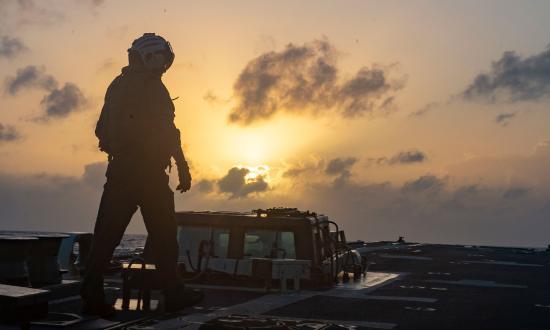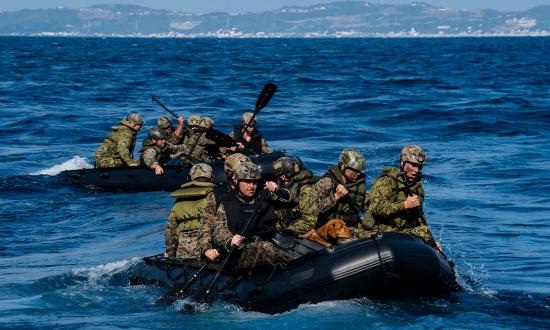A little over a year ago, an outbreak of COVID-19 on board the USS Theodore Roosevelt (CVN-71) made frontline news around the world. In this issue, the winner of our Emerging and Disruptive Technology Essay Contest (sponsored by MITRE) previews what could be coming in the realm of biological warfare. Michael Knutzen’s “Synthetic Bioweapons Are Coming” addresses the advances in genetic engineering made possible by the “clustered regularly interspaced short palindromic repeat” technique—otherwise known as “CRISPR-Cas9.” This technique was first harnessed for genetic editing in 2013. Compared with earlier techniques it is cheaper, faster, and more accurate—a development likened to replacing vacuum tubes with transistors in early computers. How much faster and cheaper? One 2019 winner of the International Genetically Engineered Machine competition was a team of high school students who used CRISPR-Cas9 to engineer E. coli bacteria to spin spider silk. Think about that for a second. My high school biology team dissected frogs! Knutzen delves into the possibilities of adversary bioscientists (not teenagers) genetically engineering weapons that could make the COVID-19 outbreak on the Theodore Roosevelt look like an easy day for a ship’s medical team.
The winner of this year’s Information Warfare Essay Contest (sponsored by Booz Allen Hamilton) is Army Captain Don Gomez. Foreign and domestic “bots” and “trolls” have waged social media campaigns to influence elections, but what would happen if social media tools were turned against military leaders just when their word, opinion, or report was most important? In “Canceled in Combat: Get Ready for Smear War,” Captain Gomez writes, “ U.S. military leaders have no qualms accepting that adversaries are willing to kill [them] to meet their objectives. It should be no surprise that they would be willing to smear them to do the same.” Imagine fake emails from the commanding officer of a ship showing him to be critical of senior leaders or a “deepfake” video showing a general in a compromising situation—such easy-to-produce smears could undermine confidence in the force at exactly the wrong time.
Naval War College Professor John Maurer penned this month’s American Sea Power Project article. In “Classic Works on Sea Power Have Enduring Value," Maurer compares and contrasts the contributions of Alfred Thayer Mahan and Sir Julian Corbett to the literary canon of naval strategy. Not only is this a great review of the classics if you haven’t read them in a while, but Maurer also highlights the role of Mahan in China’s current naval strategy and how the United States and its allies can apply Corbett’s lessons to counter that strategy. This is another salient essay that I wish I had been able to read when I was a junior officer.
Finally, the ongoing debate about supercarriers and light carriers continues to play out in our pages and in the budget deals and compromises between the Department of the Navy and Congress. If you’re looking for historical context, Navy Lieutenant Commander Andrew Rucker’s “The Little Carriers That Could” is a great read. In this 3rd-prize-winning essay from the 2020 CNO Naval History Contest (sponsored by General Dynamics), Rucker writes that the Independence-class light carriers “did not quite live up to the Navy’s ideal for a carrier design, [but] they had the virtue of being present and ready to fight as the United States went on the offensive against Japan.” No doubt there is a lesson for today’s Navy.
Until next month, let the debate continue and stay healthy.








